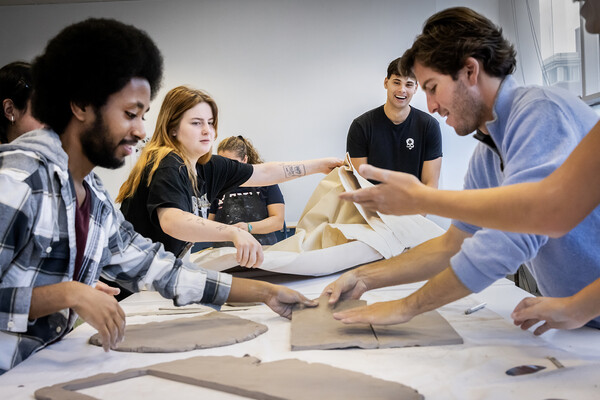Come into my house
If you’re interested in the history of footwear, you’ll find a good selection—from Egyptian burial sandals to the ’70s platforms Sally Struthers wore in “All in the Family”—at Philadelphia’s Shoe Museum. If history’s your thing, be sure to stop by the Declaration (Graff) House, a replica of the residence where Thomas Jefferson wrote the Declaration of Independence. And if you’re an art lover eager to see one of the area’s finest collections of contemporary art, the Pennsylvania Convention Center has the goods.
To find out about Philadelphia’s other 100 or so museums, you can flip through the new, conveniently pocket-sized guide, “Museums of Philadelphia” (Westholme, 2004). Written by Laura Waldron, marketing director for Penn Press, the guidebook is meant for residents and visitors alike. Maps at the beginning of the book mark the location of each museum and individual entries give the address, phone number, web site, hours and price of admission.
Waldron, a Bucks County resident who’s worked at Penn for eight years, says she’s wanted to write a Philly museum guide for years. “It’s a view askance of a city,” she says. “I had always had the idea to write this for Philadelphia.” That is, at least since her trip years ago to Ireland with a group of friends. In their travels, the group stopped in a tiny town and popped into the visitor’s center, which happened to double as the local museum. On display alongside glass bottles and wedding dresses was a vat of petrified butter that had been preserved in a local peat bog. Waldron laughs as she recalls the story: “What a window into this town!”
Back on her own turf, Waldron used the Internet, magazine articles and the resources of the Independence Visitor Center to compile a master list of about 111 museums. Her criteria for inclusion in the book were simple: the museums had to be within the city boundaries and feature a permanent collection open to the public. Waldron dedicated several entries to Philadelphia’s “house” museums, such as Fairmount Park’s Lemon Hill mansion, as well as those dedicated to culture, such as West Philly’s own East Africa Resource Center.
Waldron was surprised at the number of museums in the city. “I had no idea,” she says. “I thought I would find 50 to 75.” Why so many? She says in large part it’s because of Philadelphia’s integral role in American history. As the most important Colonial city, it served as the center of commerce, science and government. Also, people of all stripes and colors settled here, including freed Dutch slaves and Quakers (who accumulated many of the luxury goods that now occupy many of the house museums). “It’s the center of so many things,” Waldron notes.
It helped, too, that unlike other major cities in early America, Philadelphia didn’t suffer a major fire, thanks to smart city planning and the nation’s first volunteer fire companies. Philadelphia’s house museums—the city has the most in the country—therefore remain largely intact and are wonderful examples of Colonial and Federal architecture.
Waldron’s list of favorite Philly museums include Historic Bartram’s Garden, named for the Quaker farmer who built the first botanical garden in America; the Pennsylvania Academy of Fine Arts, America’s first art museum and academy; and the Stephen Girard Collection, a fantastic collection of fine and decorative arts from the early national period. Says Waldron, “There are a lot of different voices here.”
“Museums of Philadelphia” is available at the Penn Bookstore.








